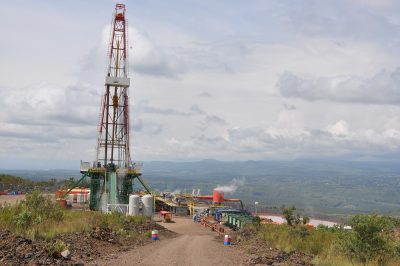EGS covered in The Guardian in the UK
Short article on EGS in The Guardian/ UK.
In a recent note on Enhanced Geothermal Systems (EGS), The Guardian describes this technology in light of the Cornwall EGS project announced earlier this year.
The article talks about that “Traditional geothermal plants exploit natural systems in which water seeps down into porous rocks in the ground and emerges back at the surface at a high temperature. This can work well but only a limited number of regions have suitable geology. Enhanced geothermal systems – also known as EGS or “hot dry rock geothermal” – are a newer approach that could be exploited in a larger number of locations.
In an EGS system, a bore hole is drilled down through the Earth’s crust to a depth of a few kilometres and water is pumped down at high pressure. This fractures the rock, creating “enhanced natural permeability” and exposing a large surface area of hot rock.
More bore holes are then drilled into the fractured rock, enabling the water being added in one hole to flow through the fractures in the rock and emerge from the other in the form of steam at a temperature of 150–200C. The steam can be used to generate electricity and well as hot water that can be pumped to local homes and commercial buildings.
The case for EGS was made by Roy Baria, a leading expert on geothermal energy and technical director of EGS Energy, the company planing the UK’s first hot dry rock power plant: an installation in Cornwall that will provide power and heat to the Eden Project. Baria argued that EGS could provide up to 35% of Europe’s electricity and make huge contributions in China, the US, Australia and elsewhere.
Unlike most renewables, geothermal power has the advantage of operating 24 hours a day. Moreover, it requires a relatively small amount of space at the surface. A commercial EGS plant is already in operation in Landau in Germany, with larger-scale projects planned for Australia, the US and elsewhere.











